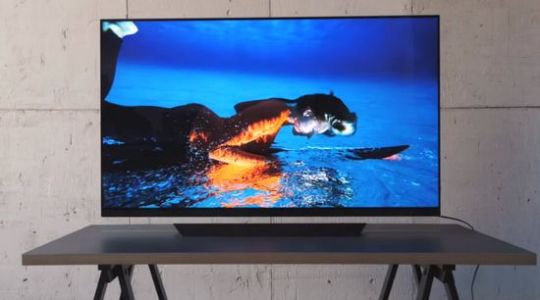#PCM Audio Codecs Market Trends
Explore tagged Tumblr posts
Text
Last Monday of the Week 2023-12-11
la baguette, etc.
EDIT: god damn this got longer than I expected
Listening: I almost exclusively listened to Against Me! during this trip for some reason. On Saturday night my metro got interrupted and I got kicked out a few kilometers from my hotel, and after watching a couple full busses skip my stop, I just walked back. I put on Black Crosses for the first time, which is a combination of demos and acoustic versions of the songs from White Crosses which is probably one of my favourite punk albums.
I can't listen to some of Against Me! without having a good bad time because of Memories but I do not have that issue with White Crosses. As far as the demo/acoustic versions go, they are much lighter than the mainline releases which is bad if you want something energetic but good if you kind of want to soak in the lyrics.
There's a lot of great ones on Black Crosses including the obvious ones like Spanish Moss and The Western World but the one that really got me while walking back was the acoustic version of Because of the Shame which is positively heartbreaking when given space like this.
Reading: I fell down a rabbit hole on delta-sigma conversion while doing simultaneous reading up on 32-bit float audio and what the hell DSD is. I will reverse explanations.
Delta-Sigma is a collection of techniques used, roughly, to convert between high-sample-rate, low-bit-depth data and low-sample-rate, high-bit-depth data. A delta-sigma audio analogue-digital converter might sample a low-pass-filtered version of incoming signal at 6MHz and 1-2 bits and use that to reconstruct a 16-bit 44kHz version of the signal. Thanks to nyquist and other various equivalences this works with basically zero quantization error if you chose your filters right.
I was familiar with this from class-D amplifiers, which are effectively delta-sigma digital-analogue conversion, which reproduces a low-frequency analogue signal by feeding a pulse-density encoded chain into an amplifier and a low pass filter.
Anyway, DSD is a silly audiophile brand name for an audio codec that stores the 1-bit pulse encoded form of an audio signal rather than storing traditional PCM audio. Fundamentally if your hardware is correct there's basically no difference in information content or density between them.
This led me to these two good articles on dithering and delta-sigma architecture, among others.
Watching: I stumbled across this ongoing good series on YouTube a few weeks ago discussing trends in marketing movies as being "no CGI" when they are absolutely the fuck not. The second part just came out, but here's part 1:
youtube
"No CGI" is always a ridiculous claim in basically any modern movie, but this is a really good breakdown of how a combination of irresponsible journalism and intentionally poor communication creates the impression that tons of incredibly effects heavy movies are actually "free of CGI".
Treating computer graphics and effects as some kind of scourge is a misled reflex. It reminds me a lot of backlash against pitch correction, because in most cases people do not realize how much pitch correction is used in basically all music you hear. Big artists playing live performances are even pitch corrected in real time these days.
It's just part of the business, and in a very parallel way, people expect the output of CGI/pitch correction even if they don't know that. If P!nk were to go out on stage and sing her music without pitch correction you'd hear the effects of her ridiculously energetic acts, and people would bitch about it because as evidenced by people who describe good sounding music systems as feeling "like live music", people don't know what live music sounds like! Live music sounds like crap compared to studio production, you're there to inhale six different kinds of cigarette and get hit in the chest by a drunk girl who isn't paying attention to where she's going.
Wow I have a lot of opinions about how people don't realize how much production is in things. This should probably be a post. Later. Hey this is like guys who talk about "no makeup" look-*I AM YANKED OFFSTAGE WITH A COMICALLY OVERSIZED SHEPHERD'S CROOK*.
Playing: Nothing really! Dark Souls stalled not because I'm stuck but because I was doing other things. Making block took up a lot of time.
Making: Hacked together a very basic proof of concept for inserting my own controller into an LED string. As encouraged by definitely unbiased user @compiler-specific I am going to try and write my own DSL for this, which will probably end up resembling a lisp just because that simplifies my life.
Also almost done with hambanner, an IRC ban management bot. I would have finished that if I was not. In Paris. over the weekend. Hopefully this week.
Tools and Equipment: Sometimes you will find that your phone is dead and you need to find your way back to your hotel in a bizzarely convoluted part of La Défense late at night. And at this time you will be grateful that you took the time to orient yourself relative to local streets and the river and the metro station so that you do not have to find a corner to charge your phone and can instead just get back to your hotel. It could happen to you.
9 notes
·
View notes
Text
PCM Audio Codecs Market Analysis 2023 Dynamics, Players, Type, Applications, Trends, Regional Segmented, Outlook & Forecast till 2033
The competitive analysis of the PCM Audio Codecs Market include a comprehensive analysis of market trends, competitor landscape, consumer behavior, and potential opportunities. It should cover key demographics, market size, growth projections, and risk factors. The report should also highlight the methodology used for data collection and analysis, presenting findings with visual aids such as charts and graphs. Additionally, recommendations and strategic insights for stakeholders to make informed decisions are crucial. The report should be concise, well-organized, and provide actionable information for businesses aiming to navigate the market effectively.
Key Function:
A PCM Audio Codecs market research report serves to assess market dynamics, identify opportunities, and mitigate risks for businesses. It analyzes consumer preferences, competitor strategies, and economic trends. The report facilitates informed decision-making by presenting data on market size, growth potential, and emerging patterns. It aids in product development, pricing strategies, and market positioning. Additionally, market research reports help businesses understand their target audience, enhance marketing efforts, and optimize resource allocation. By offering actionable insights, these reports empower organizations to stay competitive, adapt to changing market conditions, and foster sustainable growth in a dynamic business environment.
Key Dynamics:
Market research reports capture vital dynamics, including market trends, competitive analysis, and consumer behavior. They reveal market size, growth projections, and regional nuances. SWOT analysis examines internal strengths and weaknesses, along with external opportunities and threats. Consumer insights delve into preferences, impacting product development and marketing strategies. The competitive landscape unveils key players, strategies, and market shares. Regulatory factors and industry challenges are explored, aiding risk assessment. Timely and accurate information empowers businesses to adapt strategies, capitalize on opportunities, and navigate challenges, ensuring informed decision-making and sustained competitiveness in dynamic markets.
Receive the FREE Sample Report of PCM Audio Codecs Market Research Insights @ https://stringentdatalytics.com/sample-request/pcm-audio-codecs-market/10404/
Market Segmentations:
Global PCM Audio Codecs Market: By Company • Synaptics(US) • Dialog Semiconductor (UK) • Asahi Kasei Microdevices (Japan) • Cirrus Logic(US) • Knowles(US) • STMicroelectronics (Switzerland) • Texas Instruments (US) • Analog Devices(US) • ON Semiconductor(US) • Infineon Technologies(Germany) • Rohm(Japan) • NXP Semiconductors(Netherlands) • Silicon Laboratories (US) Global PCM Audio Codecs Market: By Type • Analog • Digital Global PCM Audio Codecs Market: By Application • Desktop and Laptop • Mobile Phone and Tablet • Music & Media Device and Home Theatre • Television and Gaming Console • Wearable Device • Automotive Infotainment • Other
Regional Analysis of Global PCM Audio Codecs Market
All the regional segmentation has been studied based on recent and future trends, and the market is forecasted throughout the prediction period. The countries covered in the regional analysis of the Global PCM Audio Codecs market report are U.S., Canada, and Mexico in North America, Germany, France, U.K., Russia, Italy, Spain, Turkey, Netherlands, Switzerland, Belgium, and Rest of Europe in Europe, Singapore, Malaysia, Australia, Thailand, Indonesia, Philippines, China, Japan, India, South Korea, Rest of Asia-Pacific (APAC) in the Asia-Pacific (APAC), Saudi Arabia, U.A.E, South Africa, Egypt, Israel, Rest of Middle East and Africa (MEA) as a part of Middle East and Africa (MEA), and Argentina, Brazil, and Rest of South America as part of South America.
Click to Purchase PCM Audio Codecs Market Research Report @ https://stringentdatalytics.com/purchase/pcm-audio-codecs-market/10404/
Reseason To Purchase:
Purchasing a market research report is essential for businesses seeking a competitive edge. It provides in-depth insights into market trends, consumer behavior, and competitor strategies. This knowledge empowers informed decision-making, mitigates risks, and identifies growth opportunities. Market reports streamline strategic planning, enhance product development, and optimize resource allocation. For businesses entering new markets, these reports offer critical data for successful market entry. Additionally, the comprehensive analysis instills investor confidence, ensures regulatory compliance, and saves time compared to independent research efforts. Ultimately, investing in market research reports is a strategic move that enhances efficiency, minimizes uncertainties, and fosters sustainable business growth.
Our More Reports:
1. Emission Monitoring System Market
2. Synchronous Condenser Market
3. Nano GPS Chip Market
About Stringent Datalytics
Stringent Datalytics offers both custom and syndicated market research reports. Custom market research reports are tailored to a specific client's needs and requirements. These reports provide unique insights into a particular industry or market segment and can help businesses make informed decisions about their strategies and operations.
Syndicated market research reports, on the other hand, are pre-existing reports that are available for purchase by multiple clients. These reports are often produced on a regular basis, such as annually or quarterly, and cover a broad range of industries and market segments. Syndicated reports provide clients with insights into industry trends, market sizes, and competitive landscapes. By offering both custom and syndicated reports, Stringent Datalytics can provide clients with a range of market research solutions that can be customized to their specific needs.
Reach US
Stringent Datalytics
+1 346 666 6655
Social Channels:
Linkedin | Facebook | Twitter | YouTube
0 notes
Link
0 notes
Text
LG OLED E8 PLA TV Review

Of course, innovative technologies and high competition affect development trends in almost all segments of home appliances, including TVs. For example, plasma models did not withstand the competition and disappeared from the market due to the high cost of production. Most companies have abandoned the 3D feature due to limited content. On the other hand, LG presented at CES 2019 a new Signature Rollable OLED TV with flexible screen. 260 flexible OLED signage screens, connected together to imitate a waterfall struck the imagination of the most imperturbable viewers.

Nevertheless, the main intrigue in this segment remains in the competition between OLED and traditional LED (including Samsung QLED) technologies. Additionally, companies are actively using SMART technology, expanding the functionality of their TVs. ThinQ AI from LG and Roku Smart TV from TCL perfectly illustrate this trend. As known, some companies have reduced activity in the segment of OLED technology due to the high cost of matrix production, which significantly reduces the competitiveness of OLED TVs. But LG continues to actively develop this direction. OLED (organic light-emitting diode) technology uses its own radiation of diode when passing electric current. Accordingly, the OLED-display does not require LED backlighting, provides absolutely black and maximum contrast. As a result, they have a minimum thickness and maximum uniformity due to the lack of LED backlighting. Unfortunately, the high cost significantly limits their popularity.
LG 4K OLED TVs 2018
As known, modern models use RGB OLED or WRGB OLED technologies, which use, respectively, 3 or 4 subpixels. LG TVs are based on the WRGB OLED (white + red + green + blue sublixel) technology.

According to LG, the fourth subpixel reduces the production cost while improving brightness, contrast and color reproduction. LG produces panels on its own LG Display enterprises, which, of course, expands their possibilities for technology optimizing. As a result, the company was able to significantly reduce the price of its 2018 OLED models. Therefore, LG 4K OLED TVs became one of the sensations in 2018. The LG 4K OLED TVs 2018 includes the B8, C8, E8, G8 and W8 series. W8 is the flagship. The B8 has an α7 video processor, the other series use the more powerful α9. But, of course, this is not the only difference. For example, the series use different speakers. The series uses the popular Floating Glass or Picture in Glass design.

While watching, it creates the illusion of a TV that floating in the air. The video at the end demonstrates this innovative design. The 55-inch panel provides 4K resolution with superb image quality. The α9 video processor performs four-stage filtering the image from noise, ensuring smooth playback of the most highly dynamic scenes. In addition, the increased brightness increases the contrast required for high-quality playback of HDR-content. Support for Dolby Atmos Surround Sound technology allows you to use a soundbar or home theater, which will certainly significantly improve audio playback. LG ThinQ AI provides control of the connected periphery and high quality voice recognition.
Key features
LG OLED65E8PLA supports UHD-resolution (3840x2160 pixels). Its maximum brightness reaches 595 cd / m2 at a contrast level of 221: 1. Of course, these values correspond to the top level. The series has great connection kit, including two digital cable TV tuners, two digital satellite TV tuners, four HDMI inputs, LAN / WLAN, three USB ports, etc. WebOS 4.0 for Smart-TV already has pre-installed Facebook, Amazon Instant Video, Maxdome, Netflix and YouTube and supports further expansion. Unfortunately, the energy efficiency of the series corresponds to the average level (122W). For comparison, even the previous LG 55SJ8509 consumed only 84W. The series also includes a 65-inch LG OLED65E8PLA.

10-bit WRGB OLED-matrix with 4K resolution provides a large margin of brightness, which is important for high-quality playback of HDR content. The maximum brightness value reaches 400 cd / m2, and the peak - 800 cd / m2. As known, peak brightness can only be achieved under certain conditions - on a small bright object for a short time. Nevertheless, a huge 800 cd / m2 in a certain way characterize the matrix capabilities. Traditionally, the OLED panel provides gorgeous uniform deep black due to lack of backlighting. E8 supports almost all standards, including HDR10, Dolby Vision, Hybrid Log-Gamma (HLG), Advanced HDR from Technicolor, HDR10 Pro and HLG Pro. Unfortunately, this list does not contain HDR10 +. HDR Game mode easily supports enhanced brightness without increasing input lag. In addition, the matrix frequency reaches 120 Hz. Thus, these models may well be positioned as a game TV.
Image enhancement technologies
As known, distinct artifacts and pixelation degrade the image. LG uses several technologies to solve this problem, raising the level of even not very high-quality content. LG α9 processor in conjunction with the Quad Step Noise Reduction, Frequency Based Sharpness Enhancer, Object Depth Enhancer, Billion Rich Color and Ultra Luminance Pro provide excellent quality image for any content. Quad Step Noise Reduction effectively suppresses noise, improving the clarity and smoothness of image.

It replaced the previous two-step technology. Its effectiveness is most pronounced when upscale lower resolution to 4K during the content processing. Frequency based Sharpness Enhancer sharpens the image, reproducing fine details, textures and elements along the frame edges by controlling the refresh rate.

As a result, the technology improves the detail and realism of the image. The Object Depth Enhancer enhances the object depth by analyzing textures and frame edges to identify and highlight the main object in a frame.

True Color Accuracy Pro expands the color gamut by increasing the image saturation.

Of course, sometimes experts are skeptical about some of these technologies, considering them to be marketing. But LG OLED65E8PLA really provides the most saturated image with excellent color rendition and deep black color without distortion, without loss of brightness and contrast even at maximum angles. Of course, the quality of 4K HDR playback corresponds to the highest level.
Other
E8 has a set of preset picture modes with the possibility of their further adjustment by brightness, contrast, etc. Of course, calibration is significantly different for different modes. But in general, the factory settings correspond to a very high level. Technicolor expert demonstrated almost perfect color reproduction. The color temperature varies between 6500-7000K (6500K standard). The color error ΔE does not exceed 5. Traditionally, for an OLED matrix, the color gamut exceeds sRGB. 4.2 audio system with a total power of 60 W includes a subwoofer 20 watts under the TV screen. As a result, the sound is more powerful and voluminous compared to the B, C series. The models support surround Dolby Atmos, Clear Voice III and Audio Upscaler technology, fast One Touch Sound Tuning, syncing with other LG audio devices via LG Sound Sync and playback via Bluetooth. DTS decoder supports AC4, AC3 (Dolby Digital), EAC3, HE-AAC, AAC, MP2, MP3, PCM, DTS, DTS-HD, DTS Express, WMA and aptX codecs. The LG TV Plus app (Android and iOS) can replace the remote and provides content playback from your smartphone.

PROS: - OLED matrix; - superb image quality; - great sound with support for Dolby Atmos Surround Sound; - a wide range of image enhancement technologies; - a great connection set; - support for virtually all HDR-formats; - ThinQ AI with voice command support. CONS: - high level of energy consumption; - high enough price. Read the full article
#10-bitWRGBOLED-matrix#BillionRichColor#FloatingGlassdesign#Floatingillusion#FrequencyBasedSharpnessEnhancer#LGOLEDE8PLATV#LGOLED55E8PLA#LGOLED65E8PLA#LGThinQAI#LGTVPlusapp#ObjectDepthEnhancer#PictureinGlassdesign#QuadStepNoiseReduction#UltraLuminancePro#α9intelligentprocessor
0 notes